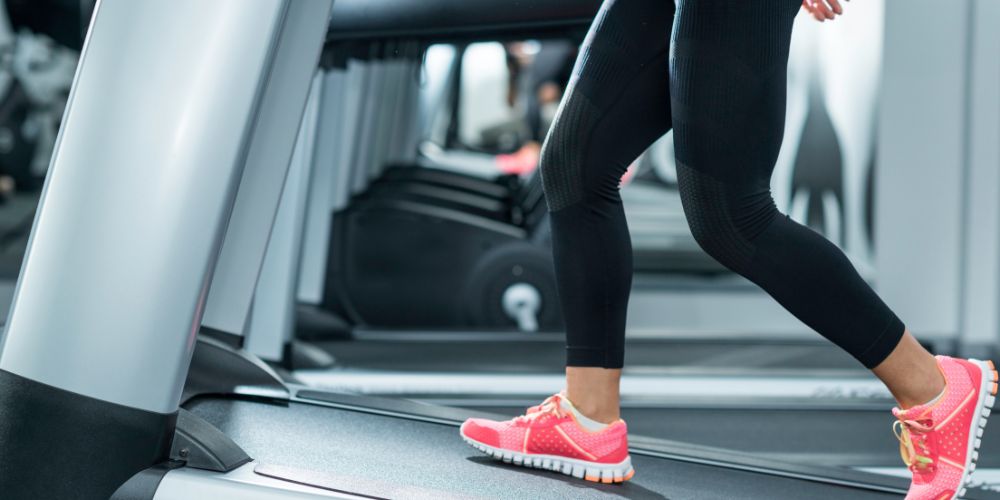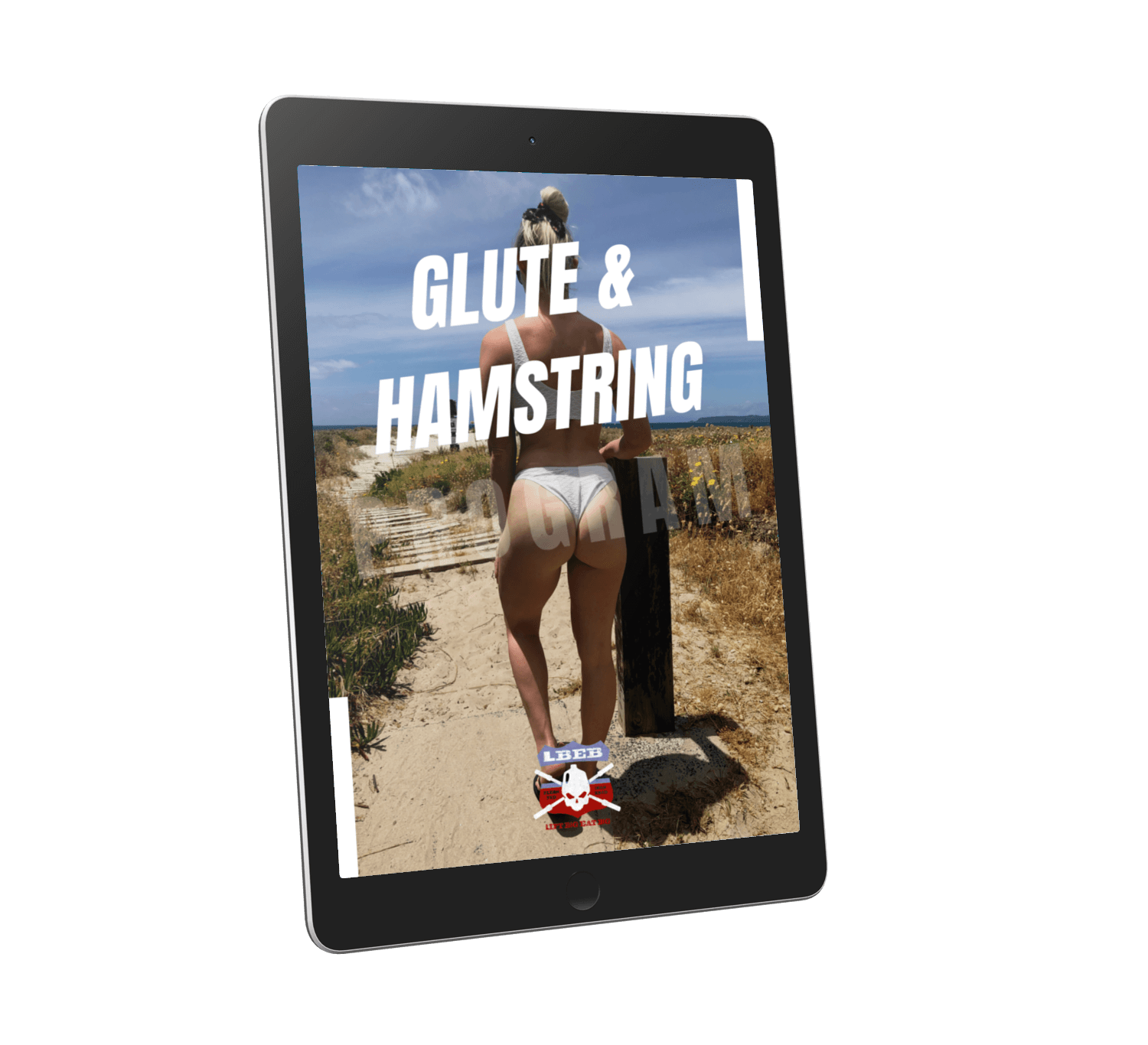Walking up a hill or with the treadmill cranked on a high incline requires more effort; therefore, it may feel like your ticket to a perky butt. But will incline walking build the glutes?
While incline walking involves your glutes, it will not build them to any significant degree. There is not enough tension to elicit a muscle-building response.
If incline walking isn’t sufficient for building the glutes, what should you do instead?
Table of Contents
Does Incline Walking Build Glutes?
If your goal is to build a bigger butt, incline walking is not the way to get there. While you may feel the deep burning sensation walking up a steep hill or maxing out the treadmill incline, there is little muscle-building stimulus.
To gain muscle, there are a few criteria that must be satisfied:
- Mechanical tension
- Metabolic stress
- Caloric surplus
If you are a rank beginner to exercise, you can throw these criteria out the window for a short period. But for the vast majority of you, this is what you need. Firstly, you need to lift heavy weights or light weights through a full range of motion closer to failure [1][2].
Associated with this is metabolic stress, which is the “burning” sensation you get during the last few reps of a challenging exercise set.
This burning sensation is the build-up of by-products from energy production, stimulating muscle growth but negatively affecting force production [3]. These mechanisms together maximize the muscle growth response.
Finally, you have a dietary component where you must consume more calories than you use each day to supply the body with enough nutrients to build muscle.
We can dive deeper and look at molecular signaling from exercise to further drive home the point that spending hours on the treadmill won’t do anything for your glutes.
The AMPK pathway, in layman’s terms, is the molecular pathway activated during and after endurance training resulting in improved cardiovascular fitness [4]. The pathway we want to activate to build muscle is the mTOR pathway which, in layman’s terms, is the muscle-building pathway.
Unfortunately, stimulating the AMPK pathway and other molecular processes with cardio inhibits the signaling of the mTOR pathway [4][5].

This lasts up to 3 hours before returning to baseline, and the strength of the signal to the endurance pathway depends on the cardio exercise’s volume and intensity. That means the longer the duration and the higher the intensity, the greater activation of AMPK.
Incline walking doesn’t provide a muscle-building stimulus for the glutes as there is little tension through the glutes with a shortened range of motion. Further, the largest glute muscle, the gluteus maximus, increases in activation as loads get heavier during lower body exercise [6].
This means the low loading from incline walking isn’t heavy enough to kick in the large glute muscles.
Incline Walking vs. Squats: Which Is Better For Glutes?

Squats take the cake (no pun intended) over incline walking for building a bigger butt. Squatting places the glutes through a large stretch under heavy loads, increasing muscular tension. Which squat should you use? Honestly, any squat variation works well for glute development as long as they are deep.
However, there may be advantages to using the back squat over other variations like the front squat. For example, back squats elicit 13% greater glute activation than front squats due to a greater forward lean [7,8].
We can break this down further and see low bar back squats elicit greater glute activation than high bar squats [9]. I recommend performing moderate to high-rep squats as deep as possible for the glutes. 8-20 reps will grow a strong booty.
Incline Walking vs. Stairmaster For Glutes
When comparing two sub-optimal exercise choices for glutes, the stairmaster is the better choice. It’s similar to performing hundreds of mini step-ups, placing more stress on the glutes. However, you can’t rely on the stairmaster over incline walking.
You need to lift weights and not be stuck on cardio machines to build the glutes. While squats are an excellent glute exercise, as mentioned above, you’re not limited to this exercise. Hinge exercises like the Romanian Deadlift, Hip Thrust, and Back Extension are all exercises to include in your program.
Summary
You will need more than incline walking to get you the glute development you’re after. Instead, spend time under heavy loads with squat and hinge exercise variations. Vary the rep range between 8-20 reps, and you’ll be on your way to needing a new pair of jeans.
Grow Enormous Legs That Won’t Fit Your Jeans
A leg specialization program to bust through muscle growth plateaus and finally throw away those skinny jeans.
References
1. Schoenfeld, B. J. (2010). The mechanisms of muscle hypertrophy and their application to resistance training. The Journal of Strength & Conditioning Research, 24(10), 2857-2872.
2. Schoenfeld, B. J., Grgic, J., Van Every, D. W., & Plotkin, D. L. (2021). Loading recommendations for muscle strength, hypertrophy, and local endurance: a re-examination of the repetition continuum. Sports, 9(2), 32.
3. Schoenfeld, B. J. (2013). Potential mechanisms for a role of metabolic stress in hypertrophic adaptations to resistance training. Sports medicine, 43(3), 179-194.
4. Methenitis, S. (2018). A brief review on concurrent training: from laboratory to the field. Sports, 6(4), 127.
5. Baar, K. (2014). Using molecular biology to maximize concurrent training. Sports Medicine, 44(2), 117-125
6. Beardsley, C., & Contreras, B. (2014). The increasing role of the hip extensor musculature with heavier compound lower-body movements and more explosive sport actions. Strength & Conditioning Journal, 36(2), 49-55.
7. Neto, W. K., Soares, E. G., Vieira, T. L., Aguiar, R., Chola, T. A., de Lima Sampaio, V., & Gama, E. F. (2020). Gluteus maximus activation during common strength and hypertrophy exercises: A systematic review. Journal of sports science & medicine, 19(1), 195.
8. Krzyszkowski, J., & Kipp, K. (2020). Load-dependent mechanical demands of the lower extremity during the back and front squat. Journal of Sports Sciences, 38(17), 2005-2012.
9. Murawa, M., Fryzowicz, A., Kabacinski, J., Jurga, J., Gorwa, J., Galli, M., & Zago, M. (2020). Muscle activation varies between high-bar and low-bar back squat. PeerJ, 8, e9256.

